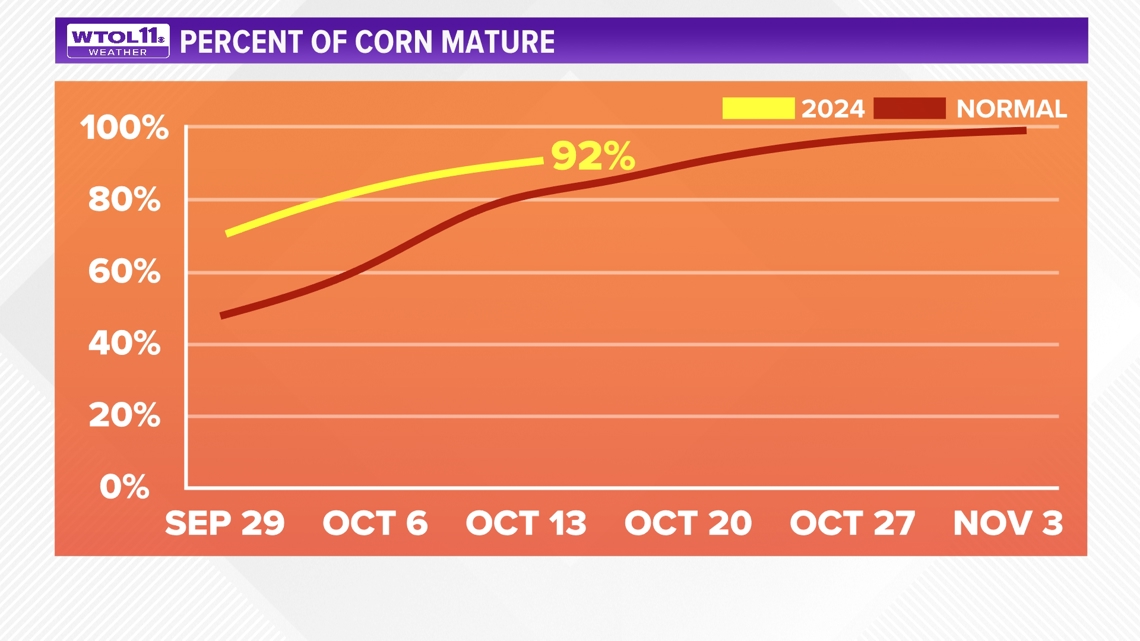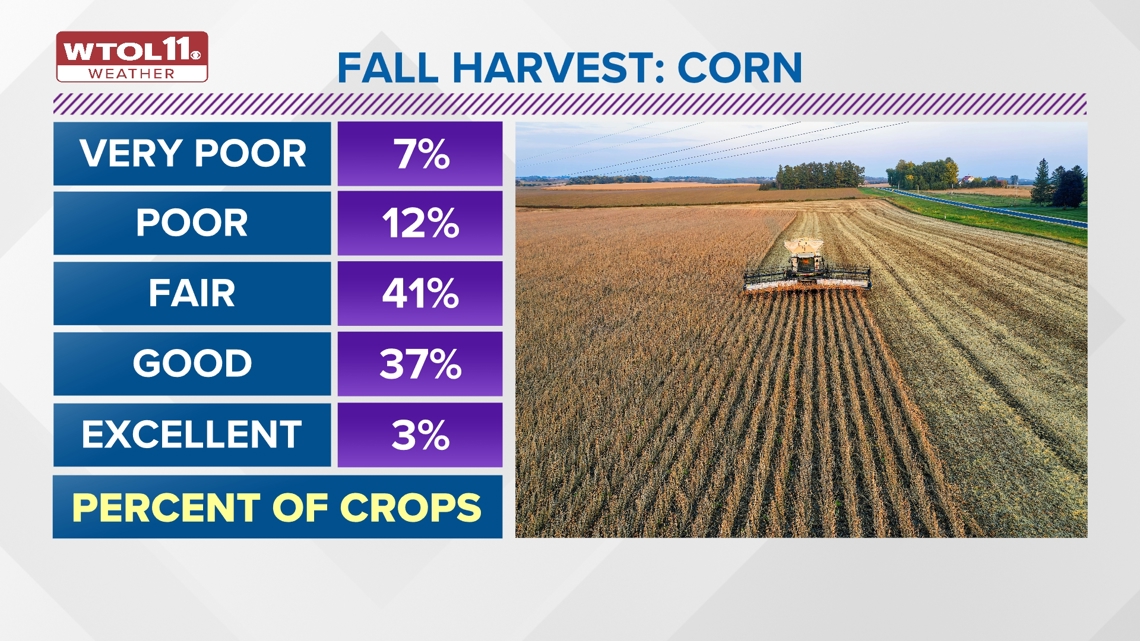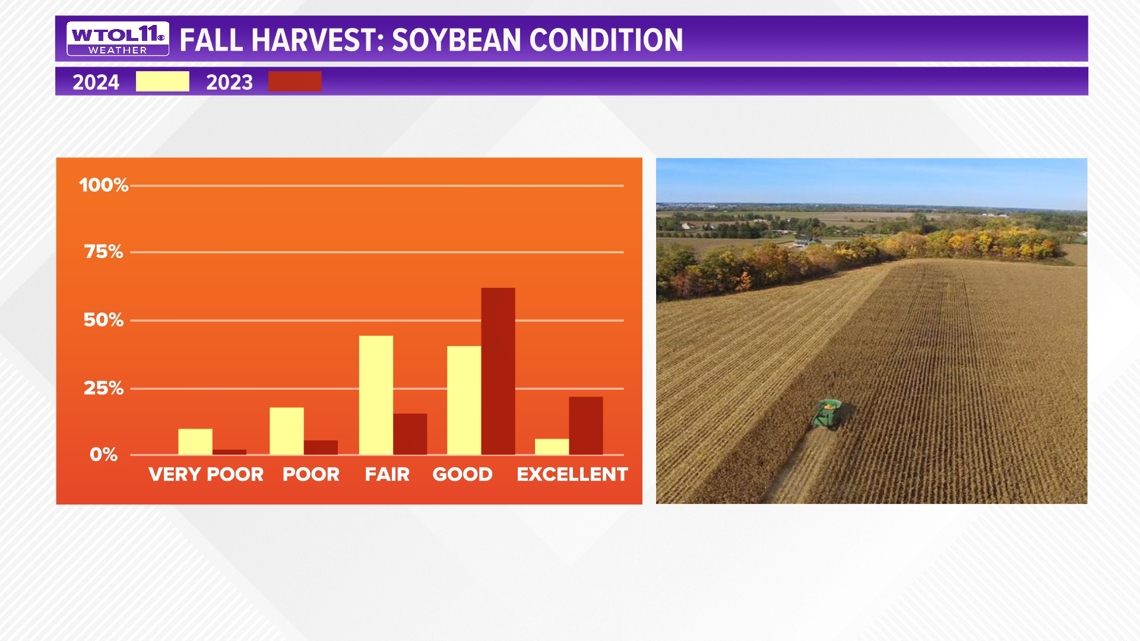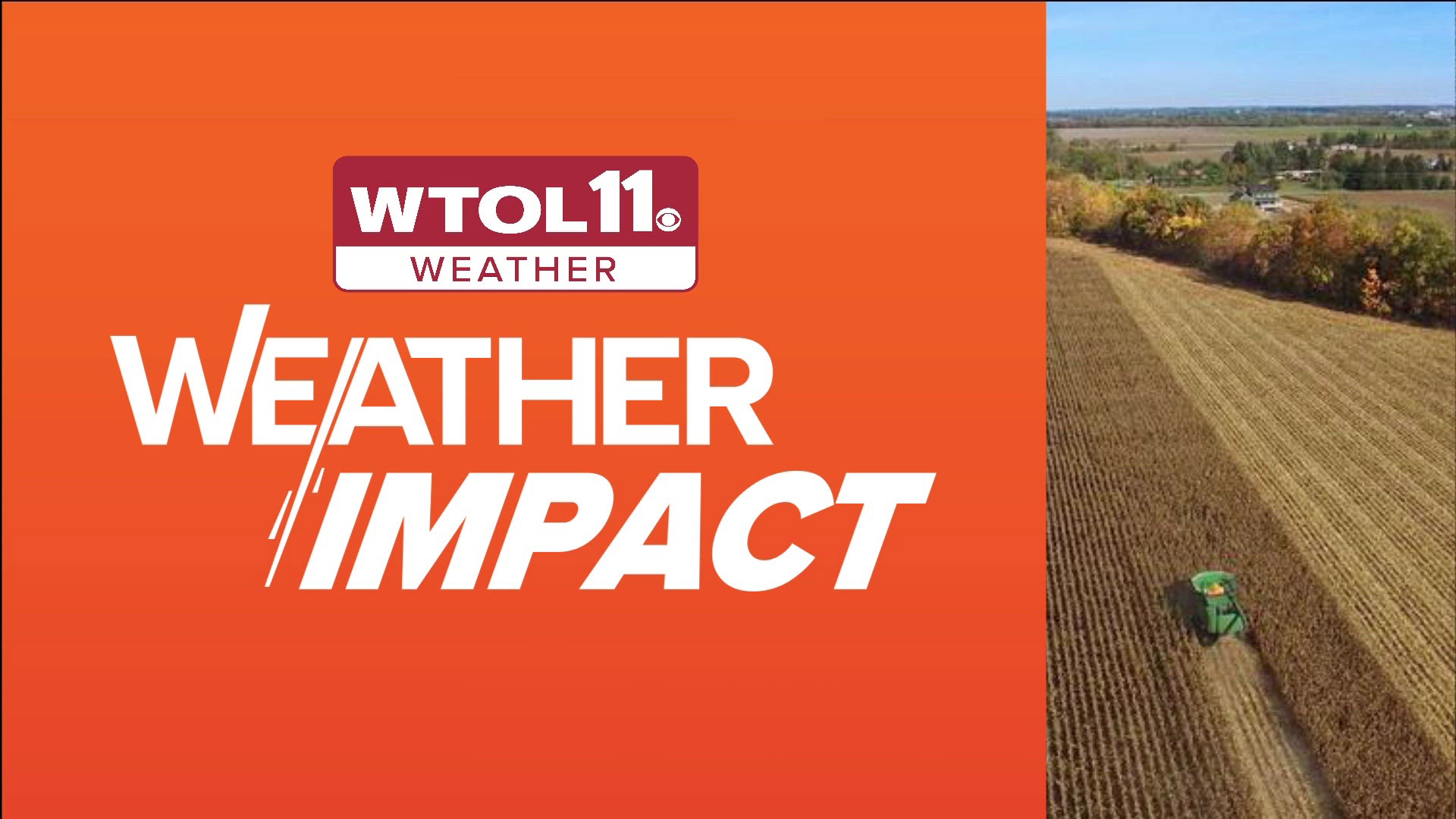TOLEDO, Ohio — Severe drought has significantly impacted the growing season and fall harvest in northwest Ohio and southeast Michigan. Warm and dry fall weather has reduced crop quality and yield.
With the autumn harvest well underway, new data sheds light on the magnitude of impact the weather has had on area farmers. Meteorologist John Burchfield breaks down the numbers here.
Abnormally dry weather affected most of northwest Ohio and parts of southeast Michigan throughout the month of September. At Toledo Express Airport, only around three quarters of an inch of rainfall occurred during the entire month. The monthly rainfall deficit exceeded two inches, making September the ninth driest on record.


Drought conditions have extended into the start of October, though 1.32 inches has fallen over the course of the month, almost all of which occurred this past weekend. Due to the prolonged lack of rainfall much of northwest Ohio has felt the effects of a severe drought.
The rainfall deficit has been most notable along the Maumee River and southeast of Toledo along US 24 from the metro to Napoleon, Defiance, and Fort Wayne. Much of Fulton County has recently been upgraded an extreme drought due to the significant lack of rain. The dry weather pattern will extend into the middle to latter half of October with precipitation remaining well below-average. The drought has impacted area farmers beginning the fall harvest.
The fall harvest has started earlier than usual in the Midwest, and 92% of corn crops in Ohio have reached or exceeded the mature stage. According to the USDA, approximately 34% of corn in the Buckeye State has been harvested, almost double the normal 18% through mid October. 62% of Ohio soybeans have been harvested, well above the normal 43%.


Crops have matured more rapidly this year than usual. Normally through mid October, only around 80% of corn has reached the mature stage. The fall harvest continues into late October and even early November. Despite the swift progress with the fall harvest, crop quality has suffered drastically with far worse yields than usual.


Only 3% of this year's corn crop meets the standards of "excellent" while 7% has been labelled "very poor." 12% of Ohio corn is "poor" with 41% ranking as "fair" and 37% as "good". Crop quality last year was considerably higher with over 70% meeting the standards of "good" through mid October.
The quality of Ohio soybeans has also faced similar challenges due to the dry weather pattern. 8% of soybeans are considered "very poor", 16% "poor", 37% "fair", 36% "good", and 3% "excellent". Last year, over 60% of soybeans met the standards of "good" and 20% "excellent" through mid October.


Many area farmers have reported pre-harvest soybean pod shatter due to extremely low moisture content. Both topsoil and subsoil moisture levels have been severely lacking due to the drought. Only 23% of subsoil moisture in Ohio farm fields is considered adequate this year with the vast majority of farmland exceedingly dry both near the beneath the surface. As the fall harvest is completed over the next several weeks, new data will shed light on the impacts of the drought on local farmers.
The abnormally dry weather pattern is expected to continue into the middle to end of October across much of the Corn Belt region. If there's any positive of this dry weather, it's that the sunshine will enable farmers to harvest their crops without any worries of wet weather.
Meteorologist John Burchfield will continue to monitor the effects of the drought on area farmers. Subscribe to the Climate Friday Newsletter for the latest!

